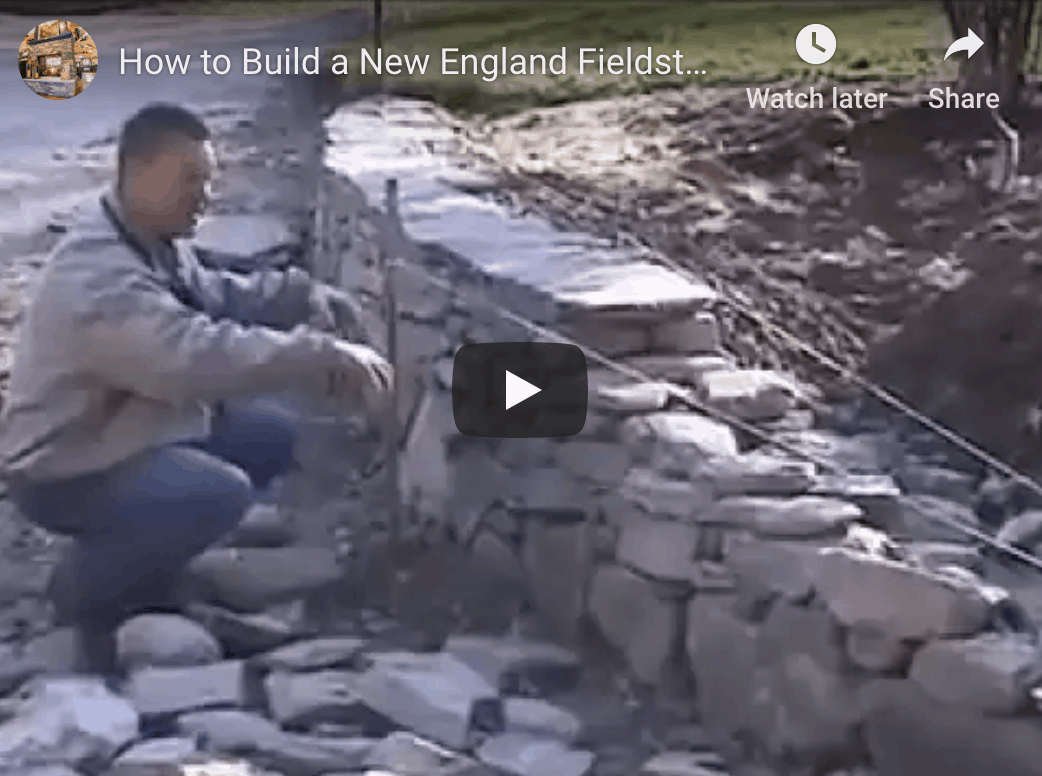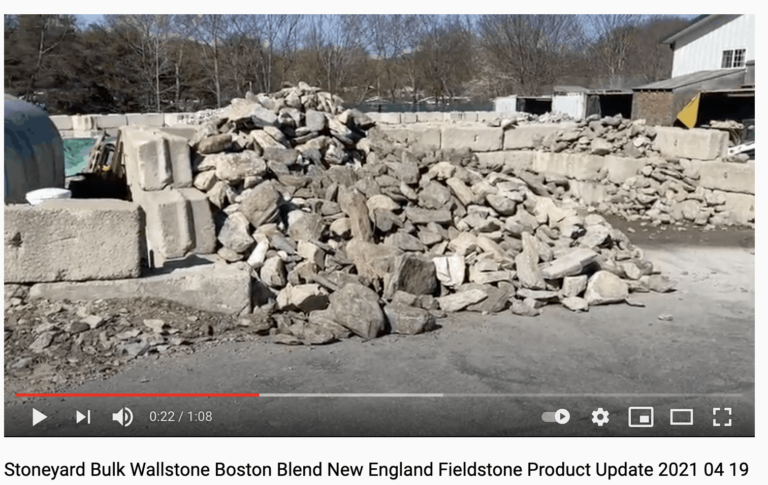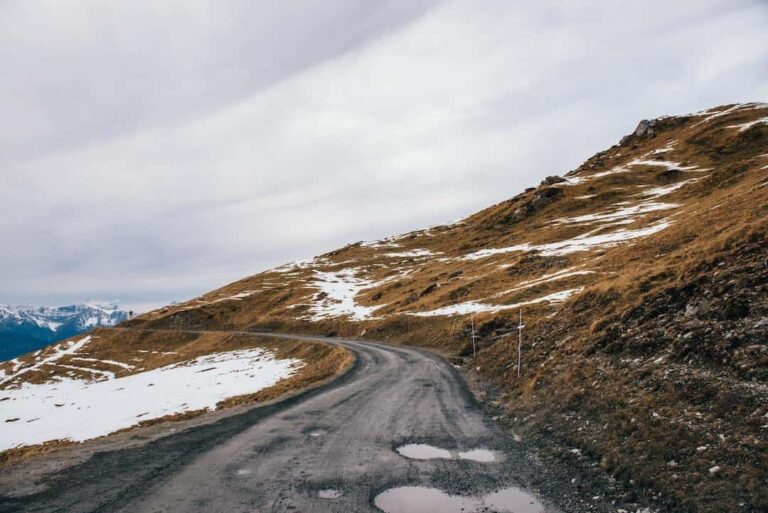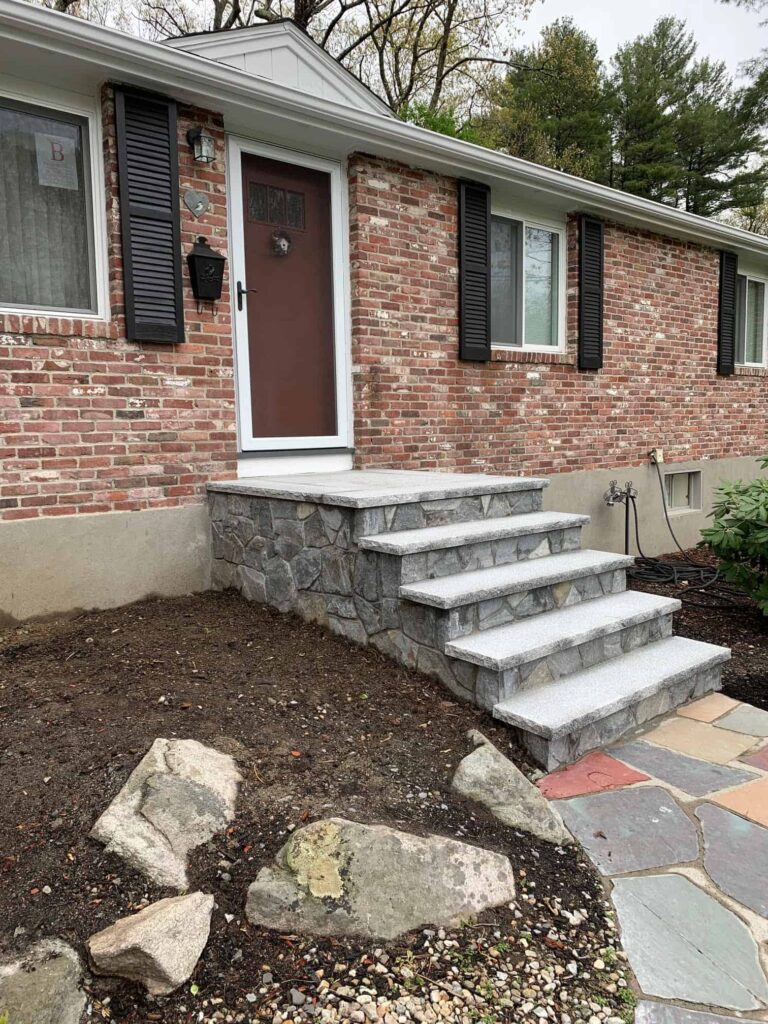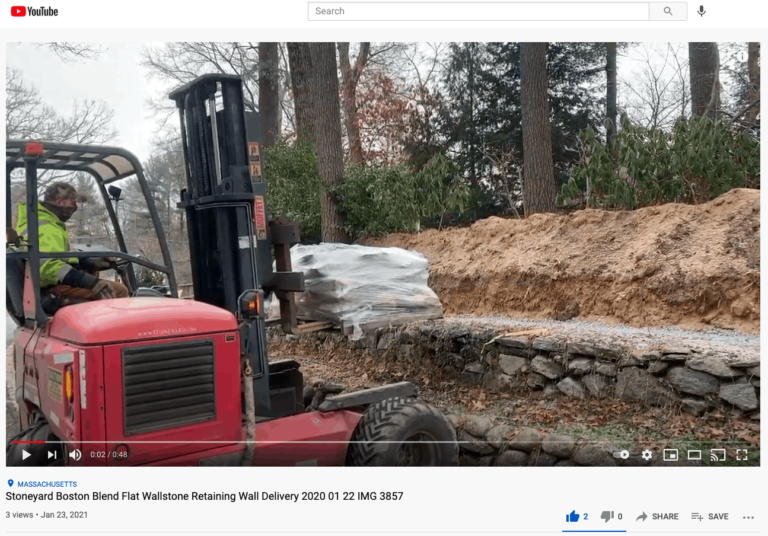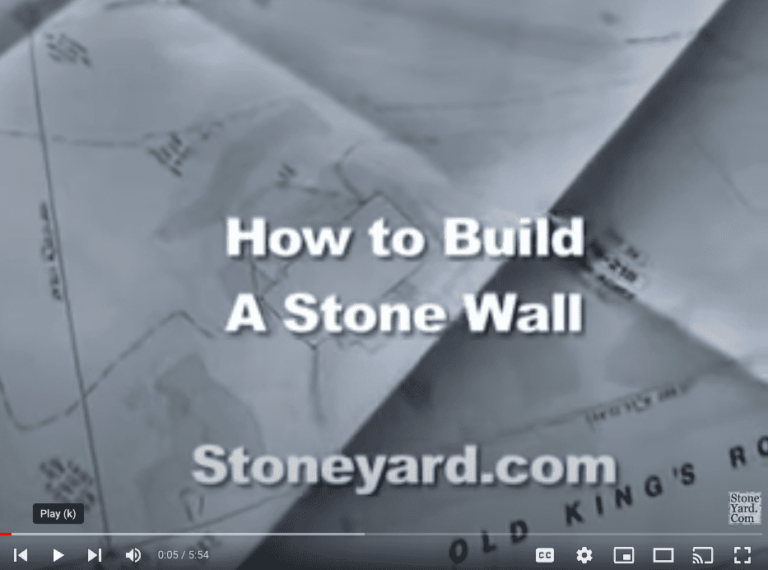How to Install A Dry-Laid Fieldstone Wall
How to install a dry-laid fieldstone wall
The aged fieldstone wall rambling through the countryside will forever be a symbol of our New England lifestyle.
Freestanding fieldstone walls serve as property lines and fences. Retaining fieldstone walls not only are beautiful; they also serve a very important function to hold back and stabilize steep embankments.
Walls made of wood or concrete will deteriorate and crack after a short period of time. A dry-laid wall made of fieldstone will allow the free flow of air and water so that the wall will last indefinitely.
We recommend watching this video in its entirety prior to starting your fieldstone wall.
Materials needed:
NEW ENGLAND FIELDSTONE
Choosing the fieldstone that is right for you will depend primarily on your taste and style. Stoneyard.com, for example, stocks many different types of fieldstone in Littleton, Massachusetts. The two categories of fieldstone are “aged” and “quarried.” Aged stone has been out of the ground for at least 75 years. There may be moss or lichen on the stone, giving it a wonderful antique quality. Quarried stone has been recently taken from the ground. This stone has a more “cut” or uniform look. The easiest fieldstone to work with is flat and simple to stack. The most popular type of fieldstone at Stoneyard.com is our New England Fieldstone.
Approximately one ton of stone will be needed for every 7.5 face-feet to build a free standing wall with an average width of 24 inches. For a retaining wall with an average width of 18 inches, approximately one ton of stone will be needed for every 10 face-feet of wall.
THREE-QUARTER INCH CRUSHED STONE
Crushed stone will be needed behind and in your fieldstone wall. The crushed stone is important in preventing water from becoming trapped behind the stonewall. Crushed stone will ensure that your wall will make it through the freeze/thaw cycles of New England winters without shifting. Approximately one ton of crushed stone will be needed for every six tons of fieldstone used.
PREPARE THE BASE
It is very important that a fieldstone wall be built on undisturbed soil or well-compacted soil. Remove 6-12 inches of earth below the grade. Be sure that this area is flat and sloping in to provide a proper footing for your wall.
Use stakes (or an A-frame) and masonry string to create the “batter” and line of the wall. The batter is the ratio of lean (back) to height. For every 12 inches of height, lean your wall back 1-2 inches. When you lay your wall, place stones as close as possible to the string but never allow stones to touch the string.
LAY FIELDSTONE WALL
As you lay your wall, be sure to stagger your joints. Lay the stones level, not parallel to a sloping grade. This will give your wall a professionally finished look. Begin to lay your fieldstone below the grade. Lay 6-12 inches of fieldstone. Use your largest stones for base stability. For an average width of 18 inches (wall heights no greater than 4 feet) lay your fieldstone approximately 2 feet wide at the base. Slope stones slightly into the wall. Remember, a minimum batter of 1 inch for every 12 inches of height is recommended.
Use small stones and crushed stone to prevent movement of all stone. Hand-set all stone. Never deposit crushed stone into large voids; fill voids with large stone. Then hand work the smaller, crushed stone into the voids. 4) Continue your batter as you build your wall. Remember that for every 12 inches of height, lean your wall back by 1 inch minimum. We repeat this because of its importance. This is essential to create a sturdy wall.
CAP THE WALL
Use larger, heavier stones to cap your wall. This will ensure that your stones will not shift. For retaining walls, the top of your wall should end at the finished grade. This will allow heavy rains to run over the top of the wall.
MAINTENANCE
If you occasionally notice holes behind your capstones on a retaining wall, fill them in with crushed stone and earth. These holes occur as part of the natural settling process. Enjoy and admire your fieldstone wall.
